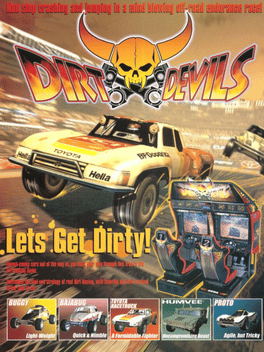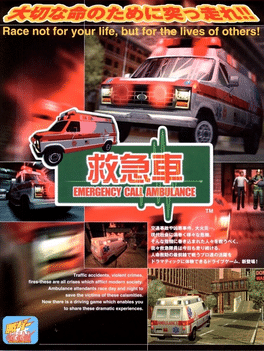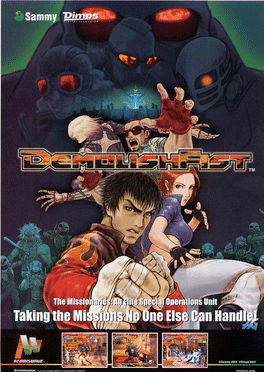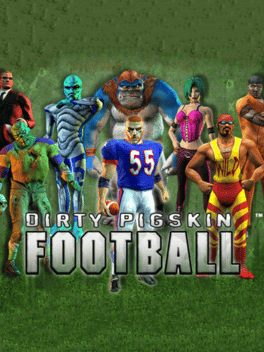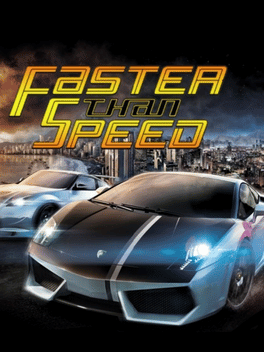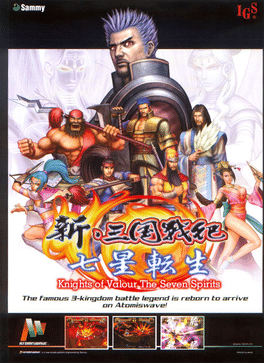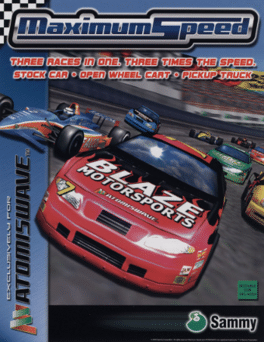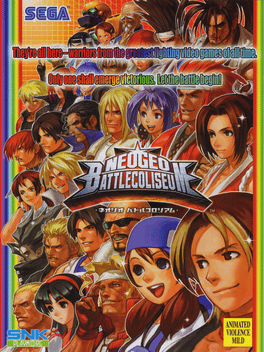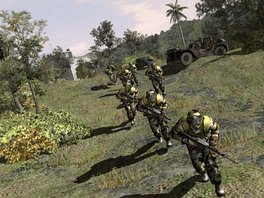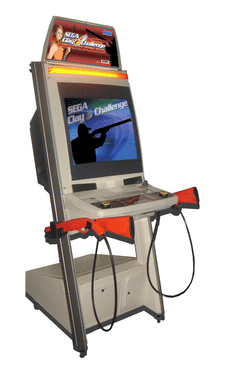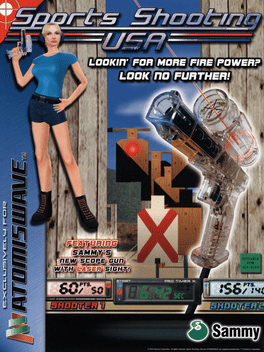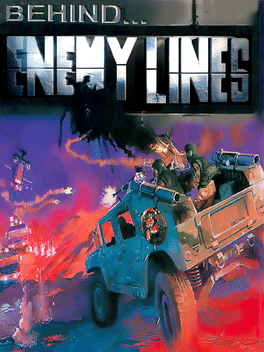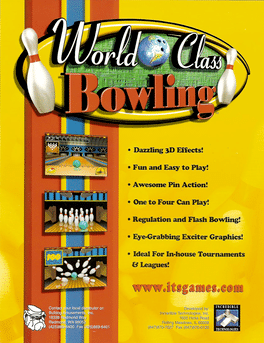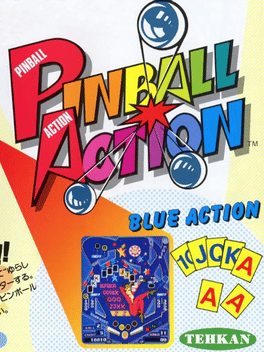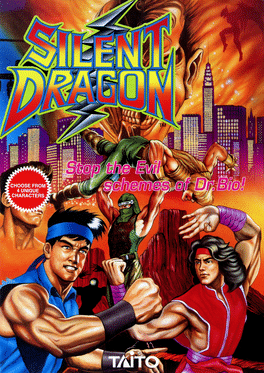Most Popular Arcade Games - Page 131
-
Air Gallet
1996
Air Gallet
1996
Air Gallet, released in Japan as Akuu Gallet is a vertically scrolling shoot 'em up arcade game developed by Gazelle (one of the offshoots of Toaplan) and released by Banpresto in 1996. It runs on the Cave MK 1 hardware. It features the voice of narrator of Lenne Hardt and Jeff Manning. -
Over Rev
1997
Over Rev
1997
Over REV is a 1997 racing game developed by Jaleco for Sega's Model 2 arcade board. It features four nicely rendered tracks across the Greater Tokyo Area. Although it has some serious issues with driving and collision physics, if you stick with the game long enough to overcome its intricacies, it can be pretty rewarding. Like Jaleco's other Model 2 racer, Super GT 24h, you'll want to use an automatic transmission. -
Dirt Devils
1998
Dirt Devils
1998
Get behind the wheel of one of five super cars and experience the feel and strategy or real dirt racing. Hold on tight as you slide your super-charged off-road vehicle through unbelievably sharp turns, bottom-out in huge potholes, fly through dual level intersections, navigate through watery swamps, and attempt driving at night with only your headlights to guide you. A rear view mirror and on-board radar screen help you keep track of your competition, as you race for glory, on one of the 3 heart pounding courses. All this, while smashing into your opponents car(s) and collection valuable points, as you pass all the checkpoints in the allotted time. -
Emergency Call Ambulance
1999
Emergency Call Ambulance is an arcade game released in October of 1999 by Sega. It is a single-player game, and the controls are made up of a steering wheel, gearshift, and gas and brake pedals. The game has been noted for being exceptionally hard, mainly in the cases after the first victim. There are two forms of gameplay: Automatic Transmission and Manual Transmission. -
Demolish Fist
2003
Demolish Fist
2003
Demolish Fist is a side scrolling beat 'em up where the player controls one of four characters, Enzo, Leoneer, Vanessa or Undead as you battle your way through various stages. There are many items, which are available to use as a weapons against your enemies. Each player has their own assortment of moves and specials that they can unleash at will. Also all four of these characters have the ability to use the awesome 'Vertigo' technique! Demolish Fist is a well put together fighting game that has many things to offer the beat 'em up world. -
Dirty Pigskin Football
2004
This is Football with a twist. Rather than regularly suited up football players each with their own set of morals, we have got a completely unique cast of players who don't know the meaning of the word. One of the featured teams is: The prisoners, in their traditional orange jail overalls. Then we have: The Hitman group, a group of assassinsall dressed in black suits and dark glasses, pleasant right? These men are all just urging to get their hands dirty. In total there are 12 teams in this game, various venues to play at, and the game also features a cool 4-player simultaneous play mode. With a play system that is easy to use, Pigskin welcomes all level of player to join in the action. -
Faster Than Speed
2004
Faster Than Speed
2004
A futuristic car racing game with 12 selectable cars and 12 selectable race tracks. Per Sega: 'Enter the exciting street-racing world of Faster Than Speed where the winner rules and the loser walks! Hit the street with the most addictive driving experience of your life! Pick from 8 customized rides. Faster Than Speed will take your players into the exotic, dim-lit, back streets of over 6 tracks challenging the quickest, the fastest, the baddest, and the most stocked racer conquers the asphalt! To take down your challenger, you need to burn the street with a variety of high-speed tricks. Features: · Single Play · Head to Head Competition · 2 - 4 Alternate Play · Bonus Game with Hidden Cars · Trick Maneuvers & Nitro Boost · Steering Wheel Feedback -
Knights of Valour: The Seven Spirits
2004
Knights Of Valour: The Seven Spirits is an Action game, developed by IGS (Taiwan) and published by Sammy Studios, which was released in 2004. -
Maximum Speed
2003
-
Neo Geo Battle Coliseum
2005
Neo Geo Battle Coliseum (abbreviated NGBC or NBC) is a 2 on 2 tag team fighting game for the Atomiswave arcade board released in 2005. The game features characters from several SNK and ADK titles. Subsequently a PlayStation 2 version of the game was released in Japan, North America, and Europe. The Xbox Live Arcade version was released worldwide on June 9, 2010. -
Ranger Mission
2004
Ranger Mission
2004
A 1 to 2 player 3-D military combat shooting game where players use pump-action shotguns to shoot on-screen enemies.The game has four different missions:Jungle Mission, Desert Mission, Indoor Rescue Mission and Tundra Mission. -
Sega Clay Challenge
An arcade target-practice game by Sega focused on the sport of clay pigeon shooting. -
Sports Shooting USA
A competitive 1 to 2 player shooting game where players, using optical guns, must shoot a number of required on-screen targets within a certain time limit to qualify and proceed to next round. -
Extreme Hunting
2000
Extreme Hunting
2000
A 3D hunting game where players use pump-action rifles to shoot on-screen animals including deer, moose, elk and bears. The game has three selectable weapons: rifle, shotgun and power bow. -
Behind Enemy Lines
1997
Behind Enemy Lines
1997
Behind Enemy Lines is a first person rail shooter where the player controls a machine gun mounted on a jeep driving through enemy territory. The game consists of four missions that all involve infiltrating and destroying various enemy facilities. The setting is modern and enemies include simple foot soldiers, light vehicles such as Jeeps, Humvees, and heavy vehicles like tanks and helicopters. As in other rail shooters, the player's control is limited to moving a crosshair and shooting, while movement is automatic. The main weapon is a machine gun that can fire both bullets and missiles. There is no reloading, and it's not possible to run out of ammo completely but if the ammo counter gets too low the firing rate will decrease. Therefore, more ammo has to be collected by destroying ammo crates. Missiles, too, have to be collected by destroying crates. They can however only be used on certain heavy targets, such as helicopters and tanks and when aiming on these the missile will automatically lock on the target and -
World Class Bowling
1997
World Class Bowling
1997
World Class Bowling is a ten-pin bowling game for up to four players, where you throw the bowl by moving the the trackball forward. You can add spin by pressing hook left and right buttons. -
XX Mission
1986
-
Pinball Action
1985
Pinball Action
1985
Pinball Action is one of the early video pinball arcade cabinets. The game starts on the initial table and three other tables with different themes can be accessed from there by fulfilling certain objectives. The three other tables feature challenges modelled on ten-pin bowling, poker, and slot machines. The goal is to get the highest score. -
Space Bomber
1998
-
Silent Dragon
1992
Silent Dragon
1992
In the 1990's, a dark force appears on our planet. it's the evil Dr. Bio, the twisted genius behind "Bio-Roid". By using advanced biotechnology, he creates mutant life forms with superhuman strength, terrorizing the human population. To stop the evil doctor, four men, each with courage and fortitude, are chosen to wage a just war against these creatures. And now, that battle has begun!


